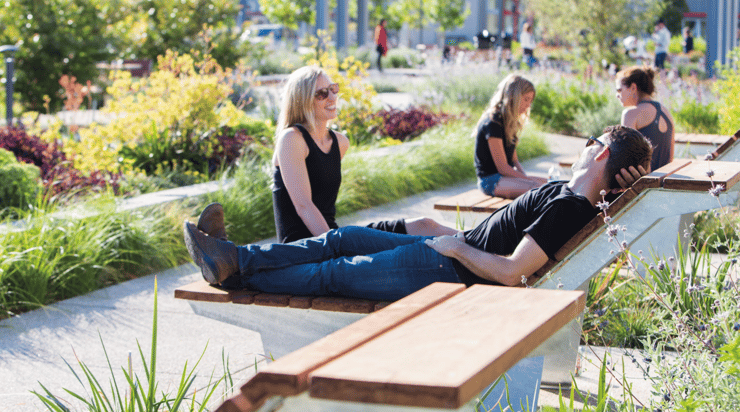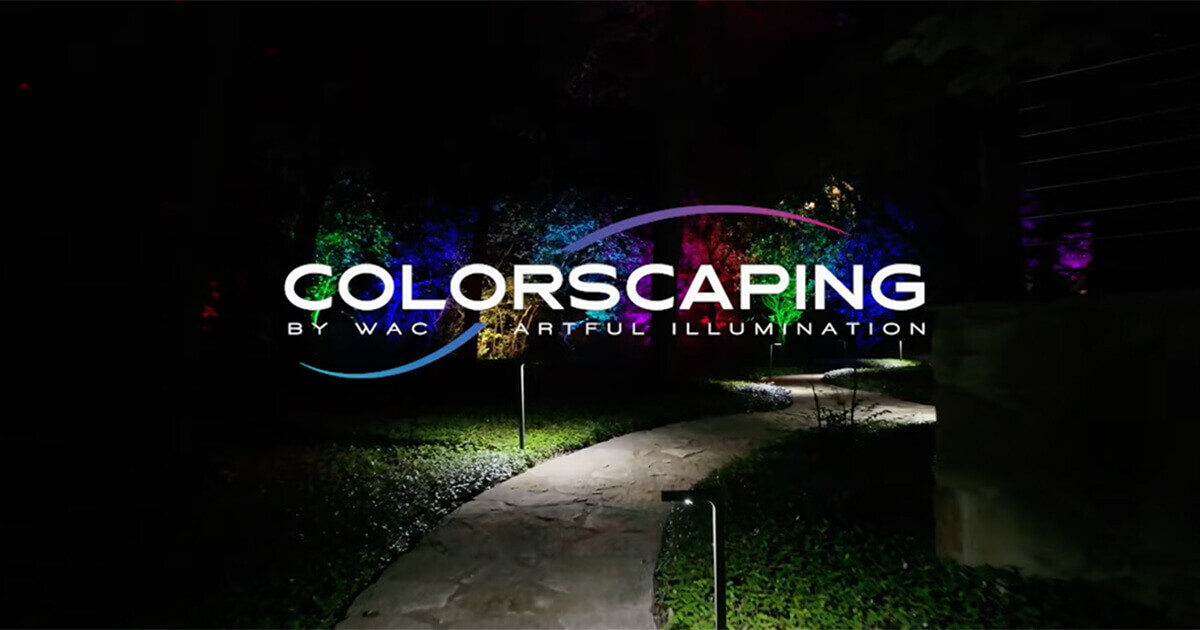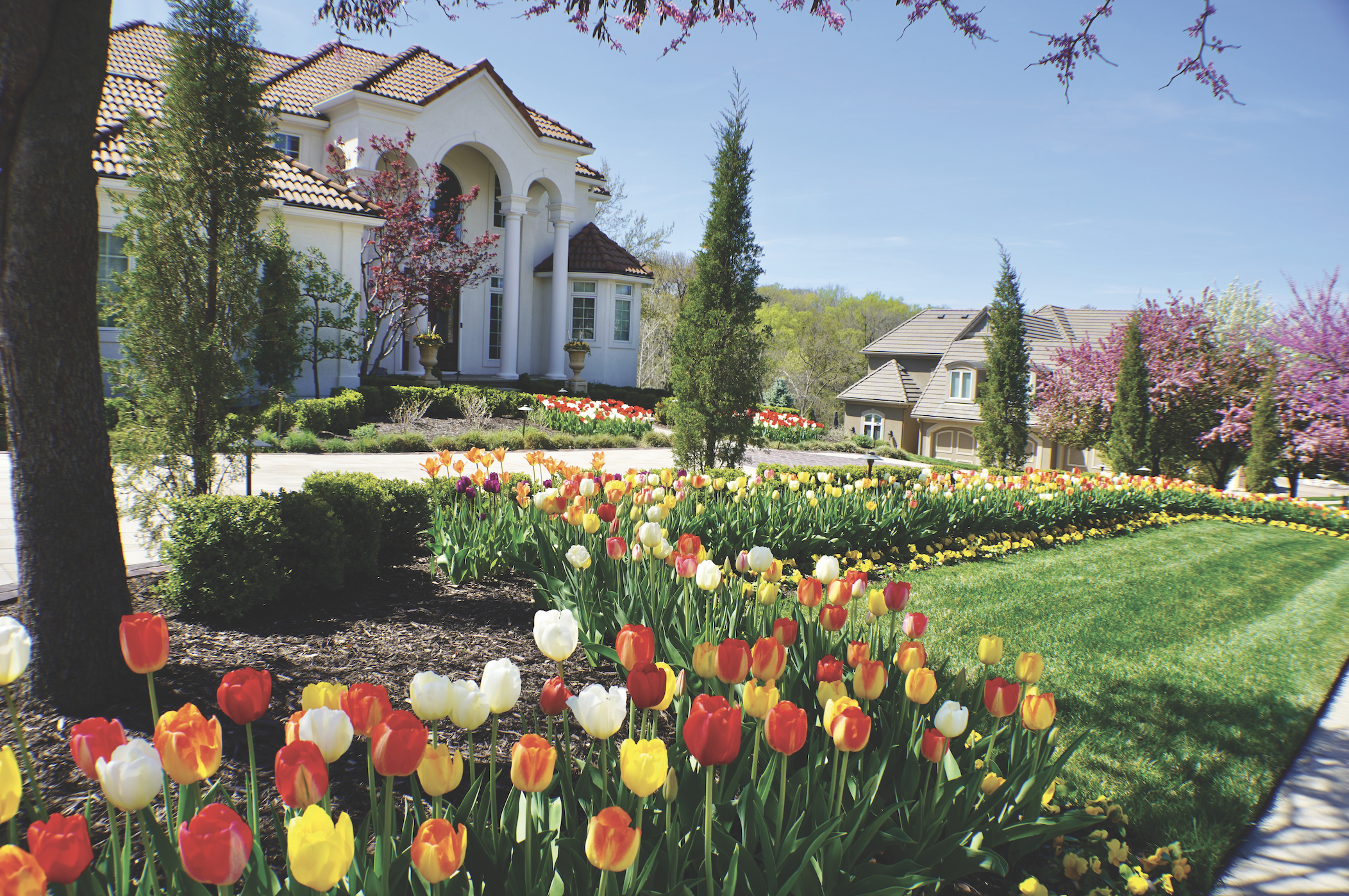WAC Landscape Lighting receives Editor’s Choice Award from Green Industry Pros
Port Washington, NY (December 24, 2024)—WAC Landscape Lighting received an Editor’s Choice Award from Green Industry Pros magazine for its...
Landscape Architect Pamela Conrad is Revolutionizing the Way Landscapes are Designed with the Launch of an App
How many times have you wondered about the environmental impact of your project? Today, there seems to be an app for everything, so it’s probably not too surprising that there’s a carbon calculator app too. The Pathfinder was launched towards the end of 2019 to help create what founder Pamela Conrad calls ‘Climate Positive Design’, which is aptly the name of the organization behind the app.

“We were trying to embrace the idea of being climate positive, where we’re ultimately taking more greenhouse gases out of the atmosphere than we’re emitting through our work,” explains Pamela, principal at CLMG Landscape Architecture in San Francisco, California. “We’ve always held sustainability at the highest priority for our work. And for me personally, I grew up on a farm, playing in the dirt—I very much care about the environment, and around five years ago I just wanted to understand the carbon impact of my projects. We were looking at all kinds of other aspects like stormwater, habitats, plants, but carbon was never part of the conversation.
"So, ultimately Climate Positive Design came out of frustration of not being able to measure the impact of my own projects, which meant there were plenty of other people in the world who also didn’t know how to measure the impact of their projects. There was a gap."
The Pathfinder app doesn’t just act as a carbon calculator, though. It also offers suggestions for reducing the project’s carbon footprint and for improving its carbon sequestration. And it comes with a challenge too—to be climate positive by 2030. It’s a bold ambition, but it’s proven popular, not just in the US but globally. “It’s very international,” says Pamela. “I believe that climate change is a global human issue and that we should be approaching it that way. Although I’m in the US, I’ve given lectures around the world and I’m collaborating with other international organizations such as the Australian Institute of Landscape Architects and the Landscape Institute. For me, a big part of it is bringing people together to make an improvement, to have a positive impact.”

In the space of just over a year, more than 1,000 projects have been submitted from more than 100 countries. This includes academic projects, where universities are utilizing the resource as a learning tool. “This is something that’s really great to get into schools early so that people are learning about the importance of it and when they go out in the world it’s just part of their toolkit, these best practices. It’s been interesting to see the other groups which are using it—it’s not just landscaping arms; it’s multidisciplinary arms, it’s government agencies.
“Everybody who logs any kind of project is recognized as a contributor, which is a way of celebrating people getting involved and educating themselves and taking action. The cumulative impact of those projects is essentially how many trees those projects are planning to plant and how that relates to CO2 in a more tangible way, by understanding what the equivalent is to taking cars off the road—how many metric tonnes of CO2 doesn’t mean a lot to people, so we try to make it more relatable.”
Since its launch, the Pathfinder’s reach has clearly continued to expand; but even though Pamela set out to make a difference, she didn’t quite envisage being at the forefront of change. “It was maybe more of an accident,” she says, laughing. “A lot of people see a landscape, they think ‘green’ and they don’t go beyond that. They weren’t diving into a deeper curiosity of really understanding it and measuring it and, quite frankly, you can’t manage what you can’t measure. “I’m admittedly a bit of a stubborn farm girl—it takes a lot for me to come from my upbringing and background to where I am now, so I’m a pretty determined person.
It just seemed to so obvious to me that we needed something, and this is a gap that our profession should be filling.”
The Climate Positive Design Challenge sets targets for how many years it will take for the project to offset its own carbon footprint, or it’s ‘years-to-positive’. The lower the project’s score, the better. And there are straightforward changes designers can make to reduce the years-to-positive score, which the Pathfinder app will suggest. There are three factors in the landscape carbon footprint, says Pamela—the materials used, carbon sequestration and operational emissions, or maintenance.
“Keeping it simple helps to reduce the barrier to entry for people,” she explains. “So, generally, plant more and pave less; by increasing your percentage of planting and decreasing your percentage of paving you’re likely to get your score closer to where you want it to be in meeting the challenge targets. So, that’s a really good starting point. Also, using cement substitutions. Concrete is probably our biggest offender as a landscape industry. We get involved in a lot of paving sometimes in more urban projects, so just changing your specification to make sure you’re using the most sustainable products possible.
“And make sure you’re using organic fertilizers. If you can get involved in the operations and maintenance and management plan developments, prescribe that they use electric maintenance equipment as opposed to gasoline powered. A typical, beautiful, high management lawn emits more carbon that it sequesters because of the typical use of gasoline powered equipment and fertilizers. Shifting away from a high maintenance lawn or turf into a native meadow grass could see a really big shift in improvements.”
Pamela also recommends bringing those who will be maintaining the scheme on board before construction is completed, maybe even as early as the design stage, to ensure a smoother transition into maintenance.
The hope of this self-confessed “stubborn farm girl” is that, through Climate Positive Design, we are only just starting to demand that our landscapes are more performative, like the way that people look at buildings. “Buildings have to be certified in energy efficiency; they need to provide all sorts of performance requirements.
"We started doing that with stormwater management, but we’re behind & we need to get back up to speed. What can these landscapes do to help address some of the challenges that we have in the world right now?"
The answer to this, surely, is ‘more’, and Pathfinder can help.


Port Washington, NY (December 24, 2024)—WAC Landscape Lighting received an Editor’s Choice Award from Green Industry Pros magazine for its...

Project Details: Cost: $750,000 | Build Time: 6 months | Size: Half Acre Lot

Highlands, NC (December 13, 2024)—Hagan Binder Landscape Architects, a full-service firm based in Highlands, North Carolina, is redefining outdoor...